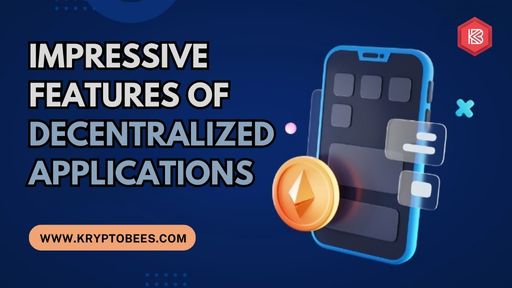In the ever-evolving landscape of blockchain technology, Decentralized Applications (DApps) have emerged as the next frontier, revolutionizing the way we interact with digital platforms. DApps leverage the decentralized and transparent nature of blockchain to provide users with a new level of security, transparency, and autonomy. Here, we will explore the impressive features that make DApp development a game-changer in the world of software applications.
Decentralization: The Backbone of DApps
Decentralization is the hallmark feature of DApps. Unlike traditional applications that rely on a central authority to manage data and transactions, DApps operate on a decentralized network of nodes. This not only eliminates the need for a single point of control but also enhances security by removing the risk of a central point of failure.
Smart Contracts: Self-executing Code for Trustless Transactions
Smart contracts, the building blocks of DApps, are self-executing contracts with the terms of the agreement directly written into code. These contracts run on blockchain networks, ensuring transparency and eliminating the need for intermediaries. By automating the execution of contractual clauses, smart contracts enable trustless transactions, reducing the risk of fraud and enhancing efficiency.
Security: Fortified by Blockchain Technology
Security is paramount in the digital realm, and DApps excel in this aspect. Utilizing blockchain's cryptographic features, DApps secure data and transactions, making them resistant to hacks and unauthorized access. The decentralized nature of DApps also means that there is no central point of vulnerability, making them inherently more secure than centralized alternatives.
Transparency: A New Era of Openness
DApps leverage the transparent nature of blockchain to provide users with unparalleled visibility into transactions and data. Every action on a DApp is recorded on the blockchain, creating an immutable and auditable ledger. This transparency not only builds trust among users but also facilitates accountability, a feature often lacking in centralized systems.
Tokenization: Empowering Economies within DApps
Tokenization is a key feature that enables DApps to create their own native digital assets or tokens. These tokens can represent ownership, access rights, or even voting power within the DApp ecosystem. Tokenization not only facilitates seamless transactions within the DApp but also opens up new possibilities for innovative business models and incentives.
Interoperability: Bridging Blockchains for Enhanced Functionality
DApps can be designed to operate across different blockchain networks, fostering interoperability. This allows users to benefit from the unique features of multiple blockchains and promotes a collaborative and inclusive ecosystem. Interoperability is a crucial aspect that ensures DApps remain adaptable to the ever-changing blockchain landscape.
Community Governance: Democratizing Decision-Making
DApps often implement a governance model that allows users to participate in decision-making processes. Through voting mechanisms, users can influence the direction of the DApp, propose changes, and collectively decide on upgrades. This democratic approach not only empowers users but also aligns with the decentralized ethos of DApps.
Conclusion:
Decentralized Applications represent a paradigm shift in the world of software development, offering a new level of security, transparency, and user control. As blockchain technology continues to mature, the features of DApps will evolve, opening up new possibilities for innovation and collaboration. Embracing the decentralized future, DApps are poised to redefine how we interact with digital platforms, paving the way for a more inclusive and secure digital economy.





Comments